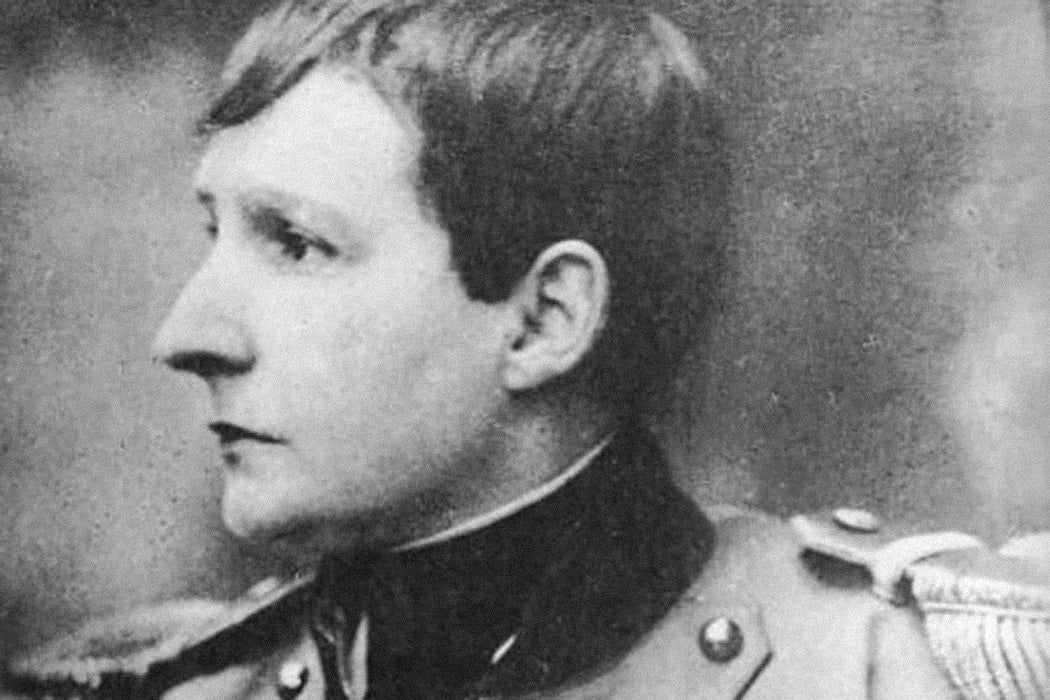Flamboyant, swashbuckling cross-dressing was nothing new in late nineteenth-century France. Paris’s unique and bohemian lesbian subculture allowed these women to thrive, though it was still illegal for French women to wear pants in public. Yet despite the dangers and the occasional assaults, Belle Époque aristocrat and performer Mathilde de Morny (1863–1944)—better known by her alias “Missy”—still committed to her daring butch look, cutting her hair short, donning tailored three-piece suits, and smoking as many cigars as she pleased.
Missy built her artistic career on the publicity raked in from her mannish attire and character, her queer-coded tendencies, and her adoption of masculine nicknames. Besides “Missy,” she answered to “Oncle (Uncle) Max” and “Monsieur de Marquis.” In terms of behavior, however, she answered to no one. Like the French writer George Sand, who bunked down with composer Frédéric Chopin and poet Alfred de Musset, Missy selected her lovers from among France’s creative elite.
In 1881, Missy entered a marriage of convenience with Jacques Godart, 6th Marquis de Belbeuf, receiving a title and a stellar domestic deal: she was free to pursue affairs with whomever she preferred (Godart himself was homosexual and found comfort outside the marriage as well). Missy divorced Belbeuf in 1903, enjoying instead the company of other women, including the elegant courtesan and dancer Liane de Pougy and the adventurous and free-spirited French novelist Colette.
Colette, arguably Missy’s greatest love, chronicled their adventures and instigated the preeminent scandal of Missy’s life. On January 3, 1907, the two artists performed a risqué pantomime titled Rêve d’Égypte (Dream of Egypt) at the Moulin Rouge. Though the audiences accepted striptease and, at times, full nudity from its female performers, they were less comfortable with two women making romantic overtures to each other on stage. A riot ensued when Missy and Colette shared a kiss (though some of the outrage was due to the suggestion that such behavior was specifically Egyptian), and the authorities had to be called in to do crowd control. Colette and Missy’s relationship survived the ordeal, and they remained partners until 1912.

Using Colette’s works as source material, scholars and historians speculate as to whether Missy could be classified as a butch lesbian or a transgender man. Kadji Amin turns to Colette’s 1932 Le Pur et l’impur (The Pure and the Impure)—which contains a fictional representation of the author’s former paramour—to dissect this unsolved mystery. Amin considers the social and economic components that may have kept Missy teetering between lesbianism and transsexuality rather than firmly rooted in one identity. Amin find Colette an unreliable narrator, invested as she was in
the project of separating gender-transitive people into “the pure” (anorgasmic, tragic, neither male nor female, exiled from culture and history) and the “impure” (monstrous libertines, women in men’s clothing, slavishly imitating the gender-crossing fads of modernity)…
And the historical record does little to clarify Colette’s lyrical musings, writes Amin, leaving the historical question of Missy/Max’s gender identity unresolved. Was Missy/Max “a masculine woman who sought to inhabit a masculine social role without surgically altering her body?” Was Max a “pre-transsexual” figure, or could he be
more accurately be described as a transgender man who, unlike others during his time period, did not choose to disappear as a woman in order to begin a new life as a man, since this would have cost him his title and his family fortune, but who, in his old age, gradually and seamlessly slipped into a passing existence as “Monsieur de Morny,” allowing only very old friends such as Colette to continue to refer to him as “Missy” and “she”?
Amin notes that the number of possibilities and permutations of identity are almost limitless. But in his estimation, “the ethical obligation of the transgender historiographer is not to claim an identity…but rather to expand, as much as possible, [the] horizon of gendered possibilities.”
Weekly Newsletter
Irish actress Denise Gough slipped on the trousers and portrayed Missy/Max in the 2018 period drama film Colette, opposite Keira Knightly as the titular character. True to reality, the relationship between the two women is portrayed as a reprieve from Colette’s bleak and abusive first marriage to Henry Gauthier-Villars (known by his pen name “Willy.”) If the real, dauntless Missy/Max were alive, there is no doubt that they would have participated in the film themselves, fearing neither audience nor critics.
Support JSTOR Daily! Join our membership program on Patreon today.







